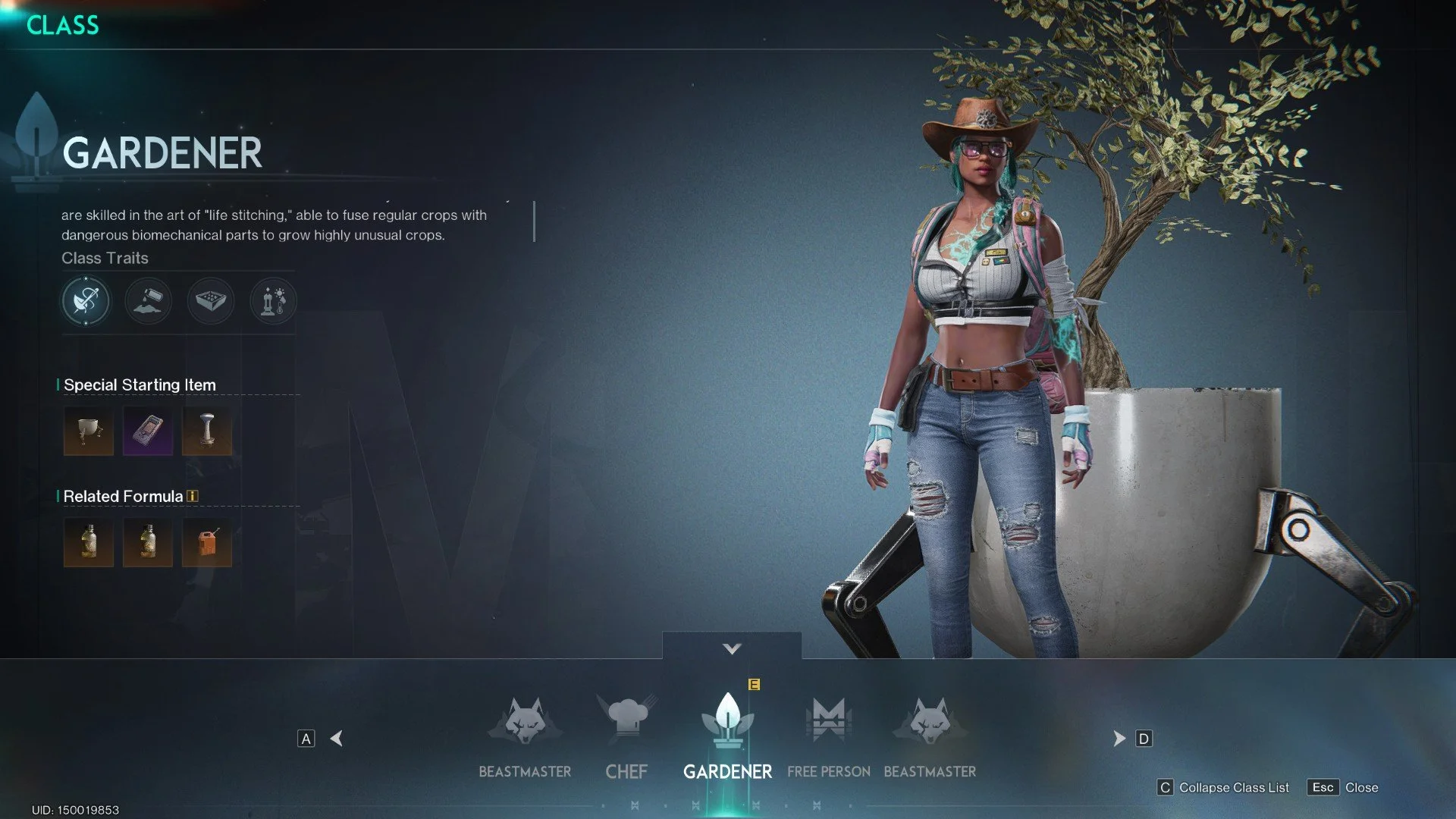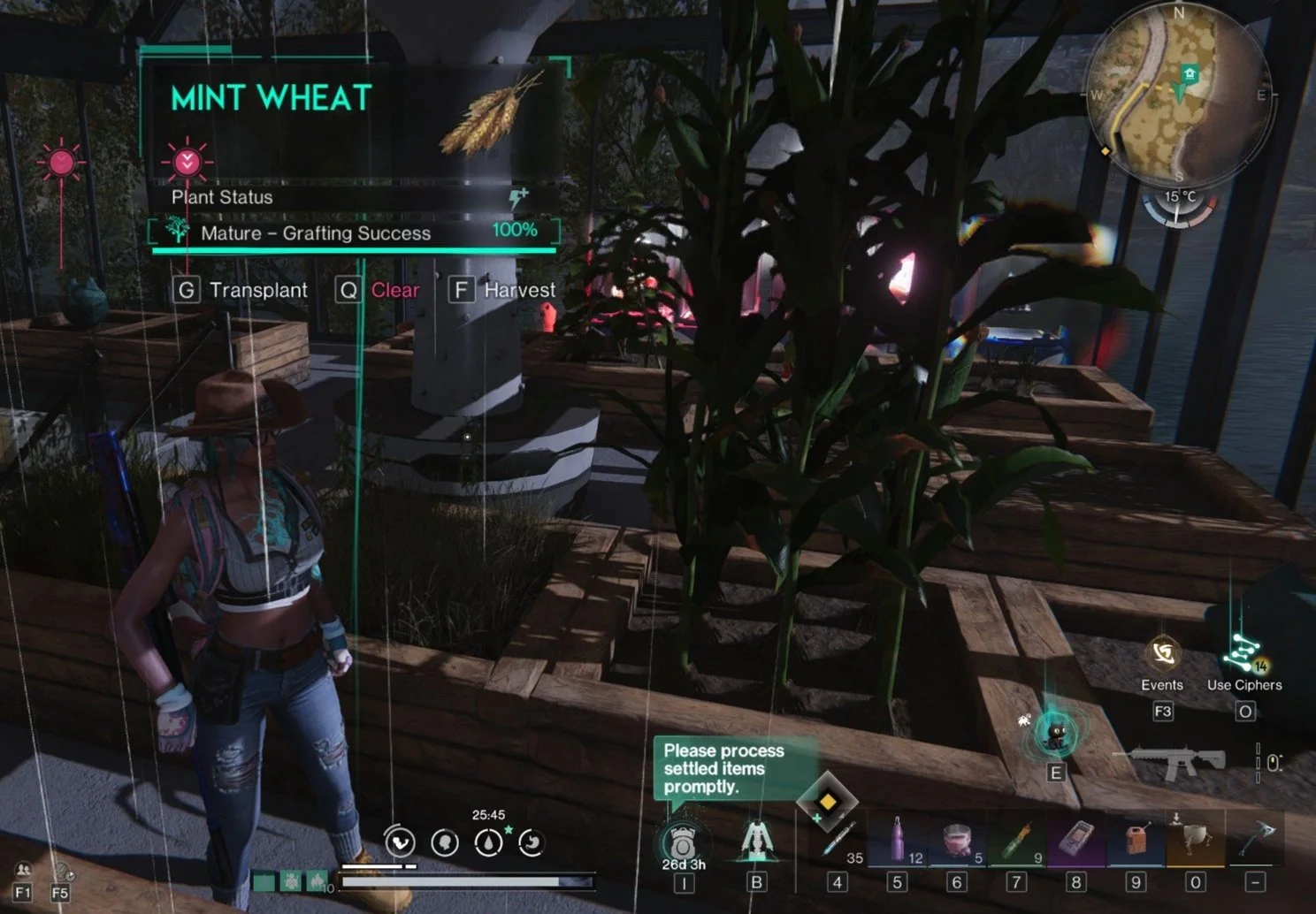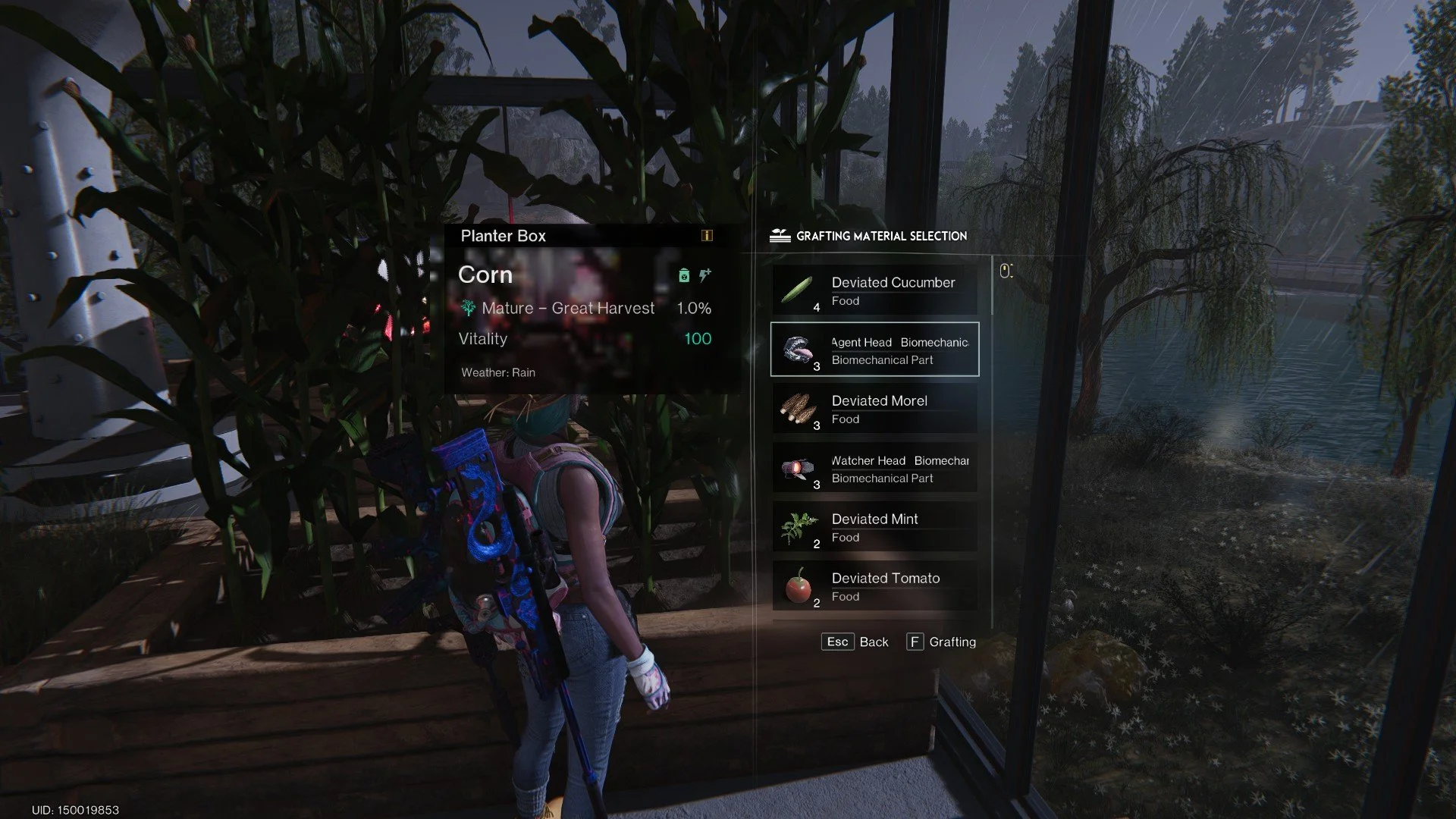Once Human Gardener Class
How to Get Started Gardening in Once Human
July 2, 2025’s Wonder Dawn 2.0 anniversary update introduced professions to Once Human. You can choose one of three professions at the beginning of your scenario: Chef, Beastmaster, and Gardener. I chose to get to know the Gardner class first. Here’s a comprehensive Once Human Gardener Guide.
Gardener Class with starting formulas and tools
The Gardener profession is a combination of biochemistry and farming. Gardening in Once Human is more than just planting seeds and growing vegetables; you’re splicing crops, engineering hybrid plants, and creating some wild, mutated deviated plants that can defend your territory. This profession requires a lot of learning, but the benefits are worth it.
How to Choose the Gardener Class
You can begin gardening by either creating a new character and selecting the Gardener profession or switching to it mid-game in the Memetics tab. If you're already playing and want to switch classes, use a Class Fragment. These can be found through scenario challenges or sent through your in-game mail.
Once you switch to Gardener under the Free Person tab in the Memetics menu, you’re given three tools to begin farming:
Portable Planter Box lets you grow and carry biomechanical crops, even outside your base.
Environment Detector scans the land for the best planting zones and soil types.
Greenhouse Core is your central gardening station, allowing you to irrigate, light your crops, and perform advanced grafting.
Ability to craft soil solution to fertilize the region soil around you for better crop production.
What is HP Sewing
HP Sewing or “Life Stitching” allows you to “graft crops with other crops or biomechanical parts to yield dual-stat crops or special biomechanical crops” with boosted stats or unique abilities. When you choose the Gardener class you immediately unlock HP Sewing.
As you level up in the Logistics Memetics tree, you’ll unlock more helpful tools:
Automated Irrigation at Level 4
Grow Lights at Level 4
Greenhouse Technology, a passive bonus you get just by being a Gardener
Seed Breeding, available from the start through your Portable Planter Box
Grafting Mint and Wheat to produce Mint Wheat
How to Plant, Get Scions, and Graft
For grafting, you need to plant seeds in either loamy soil or a planter box. It does not work for planter pots. Scions are the product you get from harvesting your crops. In short:
Plant seeds in Loamy Soil or inside your Portable Planter Box.
Wait for the plants to fully mature.
Interact with the crop and choose Graft and select a scion.
The Portable Planter Box also allows you to breed seeds from these mature crops, keeping your supply chain full.
How to Use a Plant Grafting Catalyst in Once Human
Catalysts improve the chances of successful grafting. There are two kinds:
Plant Grafting Catalyst for crop-to-crop combinations
Biomechanical Grafting Catalyst for crop-to-machine combinations
To use them, follow these steps:
Craft catalysts at a Supplies Workbench. You’ll need Detoxidents or Refined Detoxidents.
Add the corresponding catalyst to your growing plant. You add your catalyst the same way you add water, by hovering over your plant, select Details, then select the catalyst you want.
You’ll see the success rate increase by 1 to 10 percent, depending on the quality of your catalyst.
How to Graft Crops Using HP Sewing
Grafting is how you create advanced biomechanical plants, and you can do it through the Greenhouse Core or directly from a mature plant. It’s a hands-on process, and here’s how you make it work:
Find and mouseover your fully grown crop.
Choose Graft if it’s available (press H on PC). Some crops, like Peppercorn and fruits, cannot be grafted.
Select a second crop (scion) or biomechanical component to combine with your scion.
Review your Grafting Success Rate before confirming. Don’t waste materials on grafting that has less than a 34% chance.
Apply a catalyst to improve your odds.
Confirm and execute the graft.
Grafting Crop Material Selection
How to Use a Grafting Catalyst in Once Human
Catalysts improve the chances of successful grafting. There are two kinds:
Plant Grafting Catalyst for crop-to-crop combinations
Biomechanical Grafting Catalyst for crop-to-machine combinations
To use them, follow these steps:
Craft your catalysts at a Supplies Workbench. You’ll need Detoxidents or Refined Detoxidents.
Add the corresponding catalyst to your growing plant. You add your catalyst the same way you add water, by hovering over your plant, selecting Details, then selecting the catalyst you want. You’ll see the success rate increase by 1 to 10 percent, depending on the quality of your catalyst.
As you level, you gain access to create more powerful catalysts at each stage, even though it doesn’t directly say it.
Growing Plant Hybrids and Deviations
With the Gardner skill, you can grow a variety of useful hybrid plants and even deviations. For example, when you plant mushrooms, you have a chance to grow a Growshroom deviation.
Even with the Greenhouse Core, you should still put points in the Gardening branch of the Logistics tree. To help you increase your Gardening output:
Use Automated Irrigation to reduce manual watering.
Place Grow Lights in your greenhouse for increased light exposure.
Scout planting areas with the Environment Detector for the best soil matches.
Combine high-yield crops with biomechanical parts for strategic farming.
Best Places to Farm Biomechanical Parts
Biomechanical parts have a chance to drop from deviations that have fused with something mechanical. For mutant plants, farm the following deviations:
The Watcher: Drops Biomechanical Part - Watcher Head. The Watcher has the best drop rate of all deviations. You can farm Watcher Head parts at any stronghold overrun with deviations.
The Agent: Drops Biomechanical Part - Agent Head. Best place to farm Agents is the Monolith of Greed in Dayton.
Rainfall Reaper: Drops Biomechanical Part - Rainfall Reaper, which buffs elemental damage. The best place to farm Rainfall Reaper in Manibus is Southern Chemical Plant and Harborside in Broken Delta. In The Way of Winter, you can find the Rainfall Reaper in Vena Fjord at the Harbor.
The Digger: Drops Biomechanical Part - Digger Head. The best place to farm the Digger is Hearst Industries in Broken Delta. The Digger mutant plant works similar to the mining platform and mines the ore available in that area.
The Scorcher: Drops Biomechanical Part - Scorcher Head. The best place to find The Scorcher is Hearst Industries in Broken Delta. The Scorcher helps smelt ore.
Morphic Crate: Drops Biomechanical Part - Morphic Crate. Morphic Crates constantly produces the seeds, plant, and deviated plant that you grafted.
Gardening Tips for Once Human
Again, gardening in Once Human, much like IRL, isn’t as simple as planting seeds and watching them grow. You need fertile soil, the right tools, and the right catalysts. Here’s what I’ve learned so far:
Unlock irrigation and lighting tools early.
Craft soil solution and keep your regional soil level at around 250-300, though 700, which is the max, is best.
Harvesting crops erodes the soil fertility, so fertilize your soil with soil solution after harvesting.
When you loot biochmechanical parts, they go in your Materials tab of your backpack and can be disassembled. Before you “Disassemble All,” make sure you go through and deselect biomechanical parts. Do not disassemble biomechanical parts unless you’re absolutely sure. Some are hard acquire, especially the Morphic biomechanical parts, from Morphic Crate deviants.
Biomechanical parts do expire if left in your bags. Place them in storage or even vending machine for safe keeping. Just be careful.
Use the Portable Planter Box to breed more seeds and improve variety.
Being a Gardner in Once Human may seem a bit complicated, but once you figure out your rhythm, it gets easy. If this Once Human Gardener guide helped make your gardener journey a little easier, please leave a comment and share your gardening tips.






